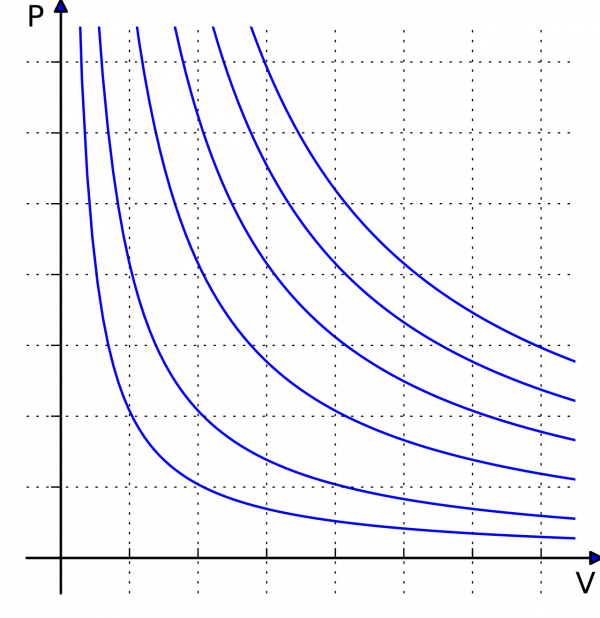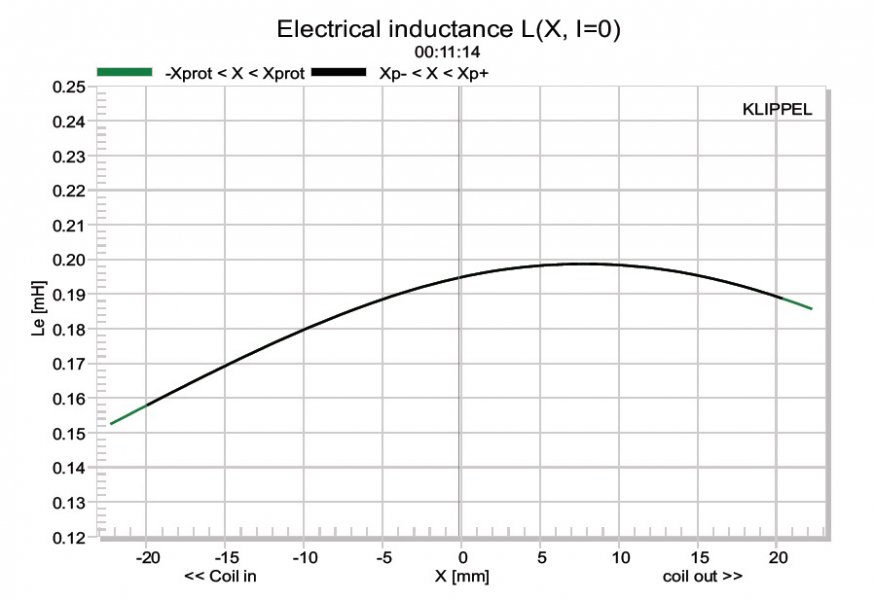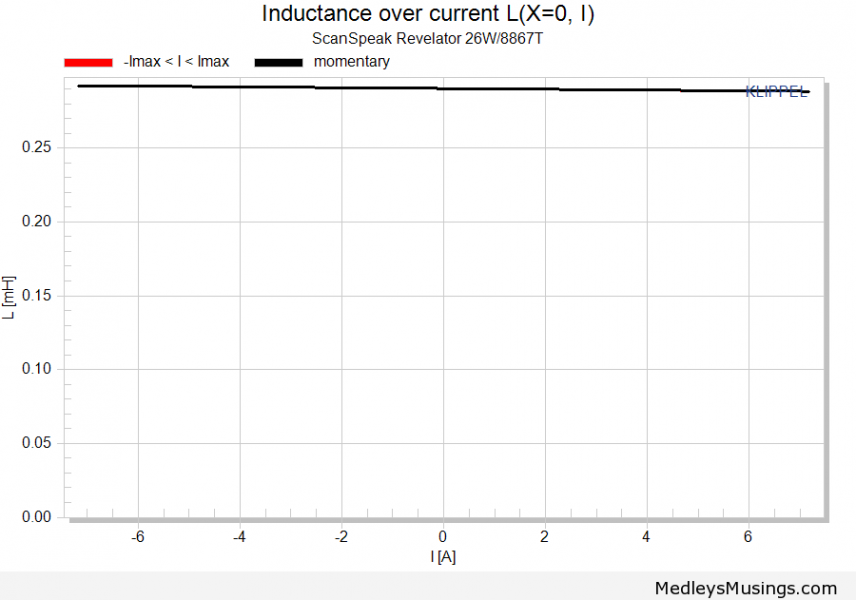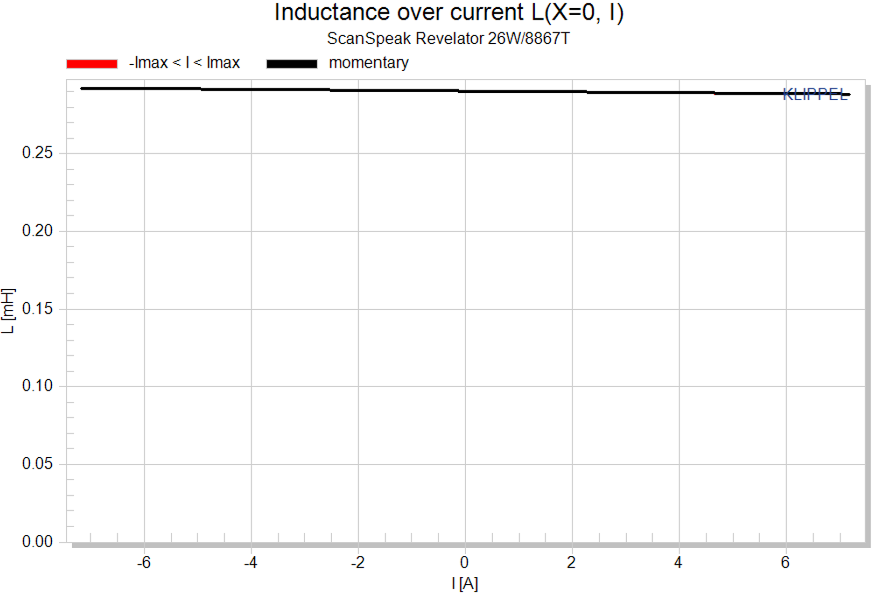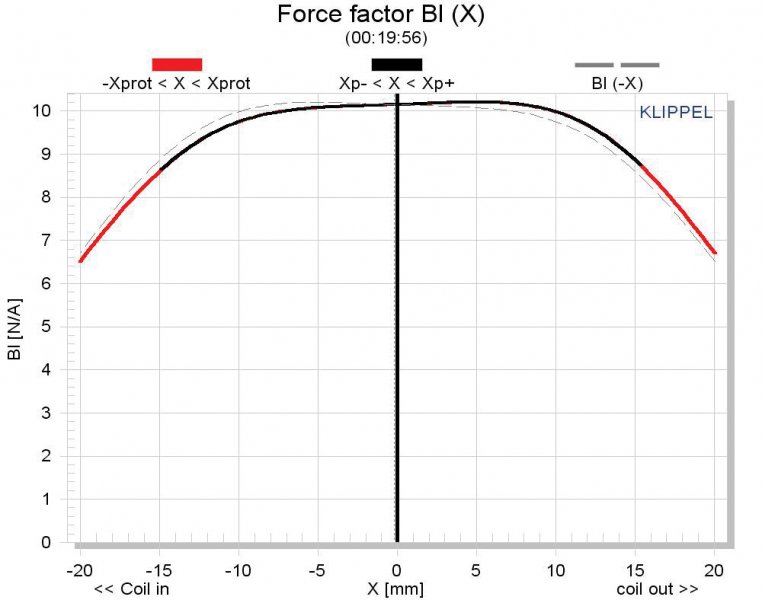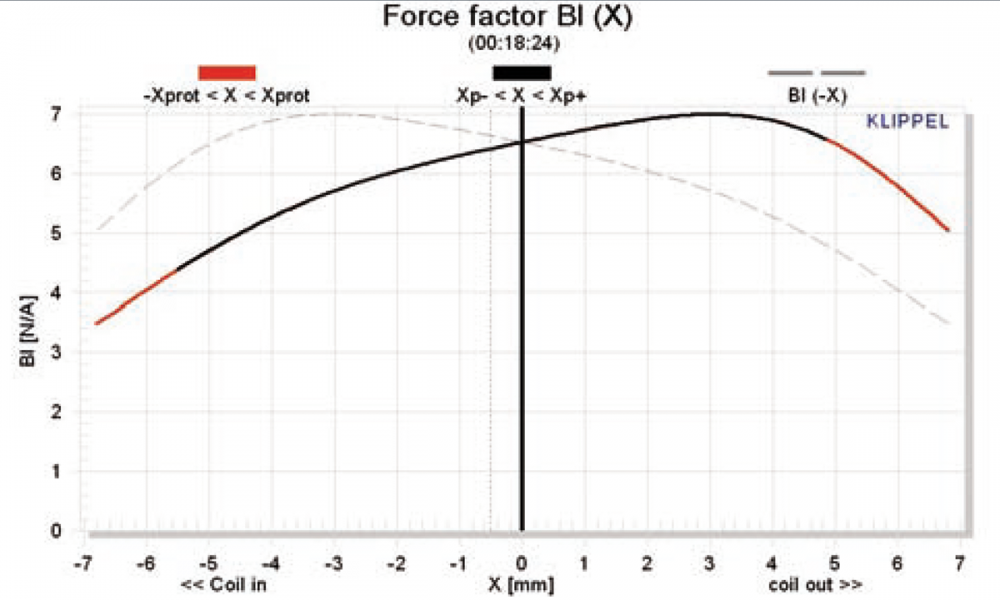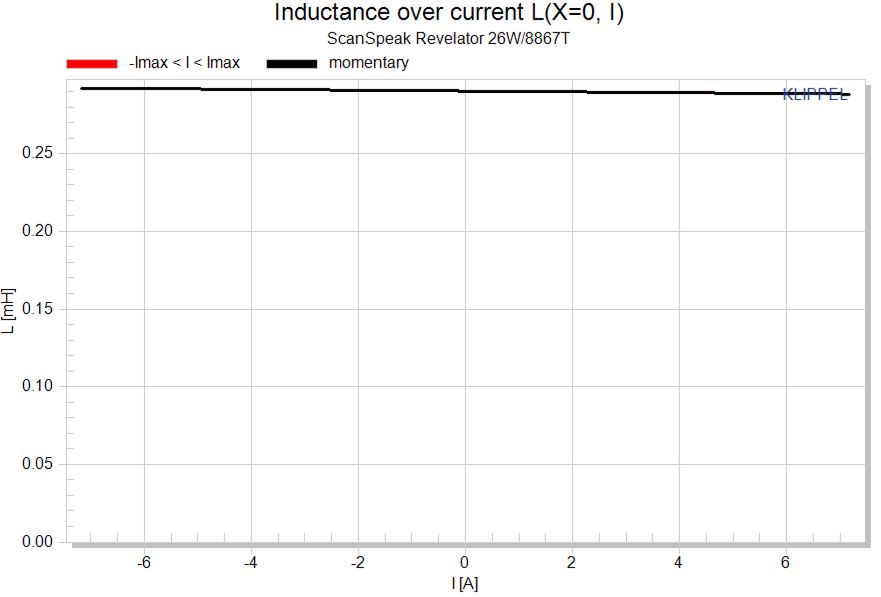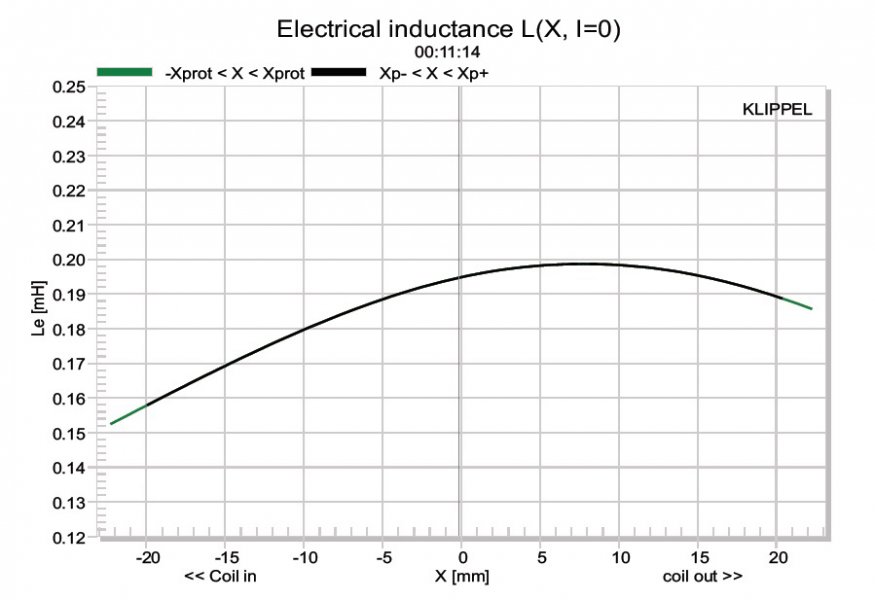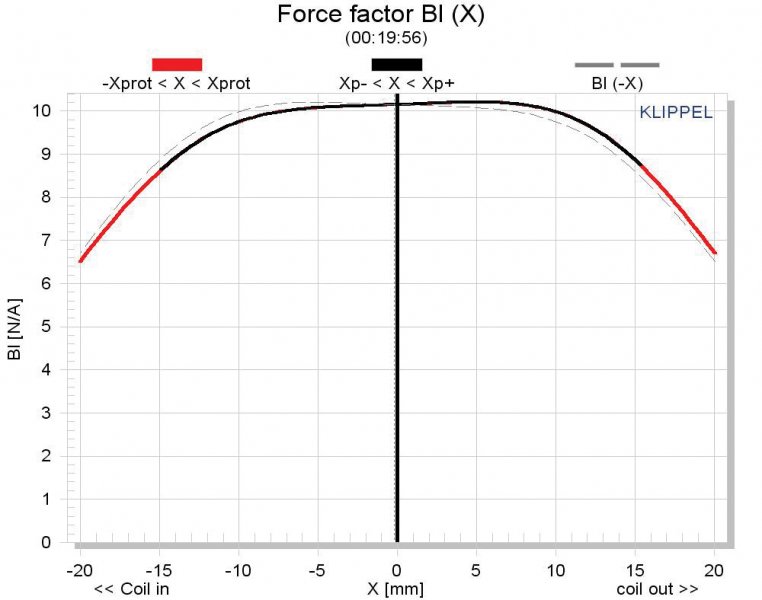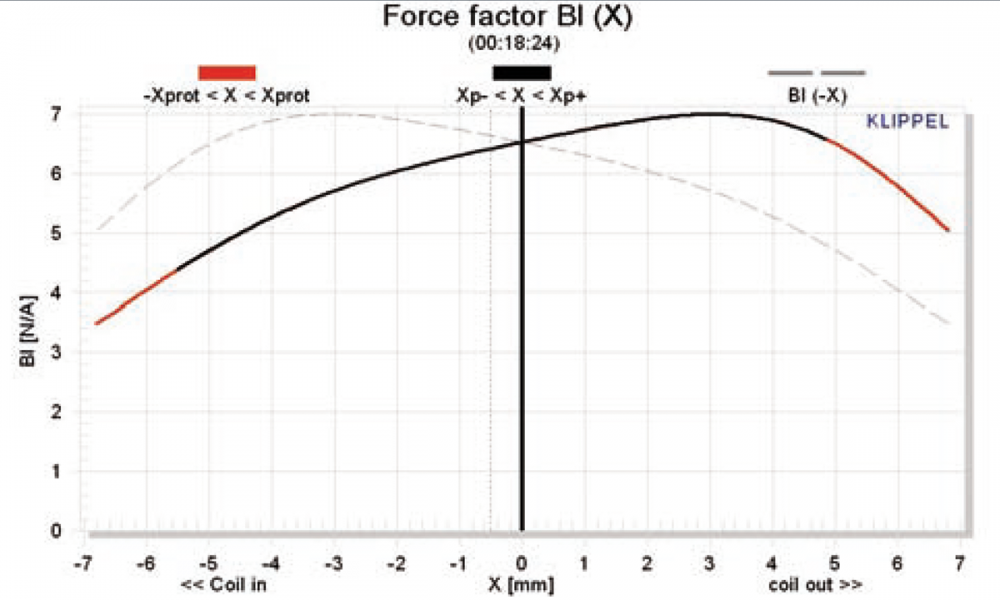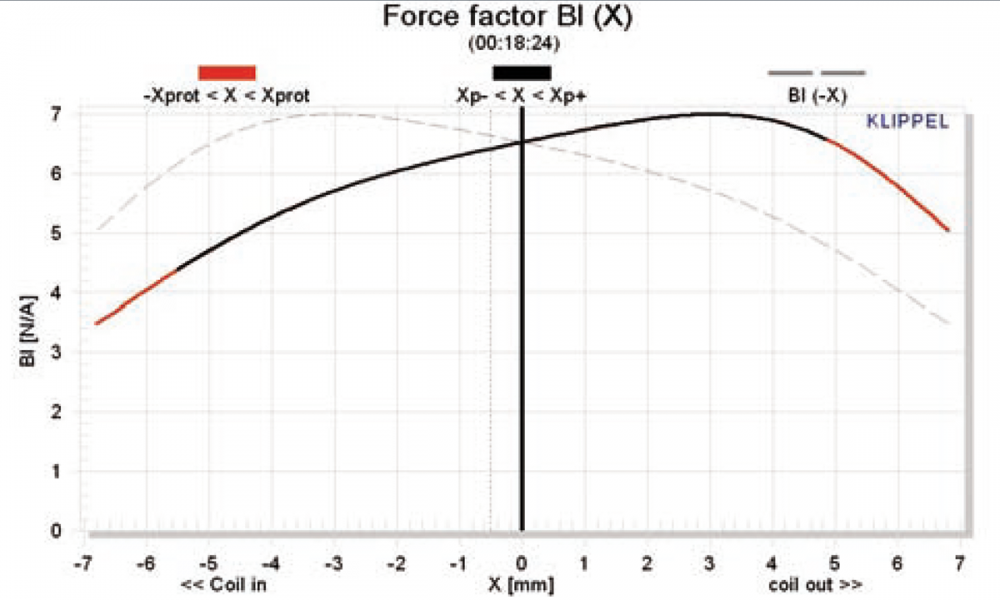The 8 most import factors for dynamic compression in reproduction of a musical event are:
1. The recording
2. The applied driver's total suspension compliance and linearity vs its dynamic output in its dedicated bandwidth.
3. The enclosure vs various compliance factors of the driver
4. The waveguide/horn vs driver and/or waveguide vs overall baffle shape/covering.
5. The self-induction of the driver and its linearity over excursion.
6. Driver's thermal and magnetic saturation linearity.
7. Thermal effects regarding air inside enclosure, and in room.
8. Matching linear driver compliance to desired dynamic range.
1.The recording
As we all know, some recordings play louder than other, while using the same total dynamic range. This highly depends on the compression of the microphones used, and the amount of gain compression, limiting and other tools that have been applied by the producer and mastering engineer. For us the best recordings are made with top notch microphones and studio monitors, or even better: high end speakers, to resemble the quality of our high end equipment being equally low in dynamic compression.
2. The applied driver's total suspension compliance and linearity vs its dynamic output in its dedicated bandwidth.
The driver's moving parts will be relatively harder to move when making larger movement. This starts with the QMS factor of a driver (eg. a softer spider and more flexible rubber surround) to provide a constant level of compression (this also applies to microphones). But then, most important for DYNAMIC compression, is its kms linearity (actual compliance, when inverted it is the cms number of the driver).
Good:
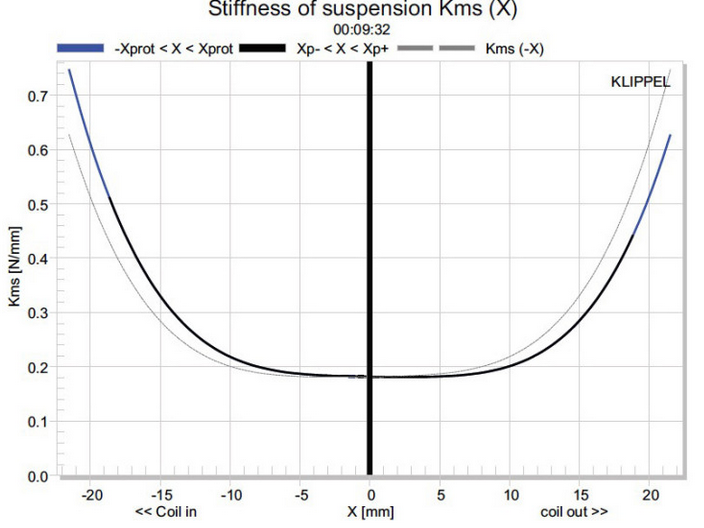
Bad (for this example, I compared a competion driver of the same size):
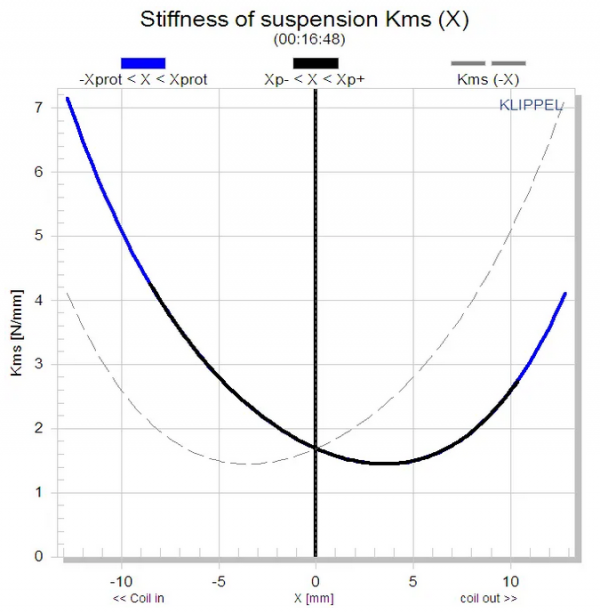
Basically the flat and symmetric (from 0) part is the part of excursion in mm that is without dynamic compression. Typically seen is a lot of dynamic compression in mid-range drivers on perhaps more pop/mainstream focussed speakers (B&W 800, KEF blade etc.) that don't apply a decently flexible surround around the membrane, allowing it to move freely. With such speakers, the louder you play, the more energy is relatively NOT used to larger parts of the output, so not ending up in the same relative air movement when comparing large sounds to small sounds (the small sounds, details, high frequency sounds, get highlighted). If the mid-range is relatively harder to move on larger excursion then bass and high frequency drivers, you get a "smiley curve" when playing loud. With simultaneously compressed detail entering the mix in mid-range.
These will sound good or (escpecially accaptable and forgivng) on mixes made for pop/radio or mixed of on something like is mixed off on short/mid-fields like eg. Genelec 8351 (which is however a very decent monitor for soundstage-checks), instead of doing so with proper main monitors such as found at the same brand in the SAM range. If you personally agree will still depend taste and finesse. Many might prefer this mid-compression behaviour, pending on the overall speaker dispersion vs room situation and personal taste. Personally I like a speaker that sounds such as good and in balance with low and high volume, including all frequency bands, and only sounds even better when considering the typical effect of the natural extra's pure db's being brought to the table (my ears). It also means that for top tier, we need to go for multiple drivers, each optimal in their own specific bandwidth application. And it has to sound right anywhere from fair living room system situations to top-tier-listening rooms.
The type of driver also is very important: Ribbon's, electrostatic panels, AMT's all have typically (but not necessarily) more dynamic compression than a membrane placed relatively free in a high QMS suspension (dynamic driver, moving coil), given there constructive nature. But also a compression driver, although having a more typical (inverted) dome membrane, usually depends on this type of higher-loss and less-linear suspension (wiki):
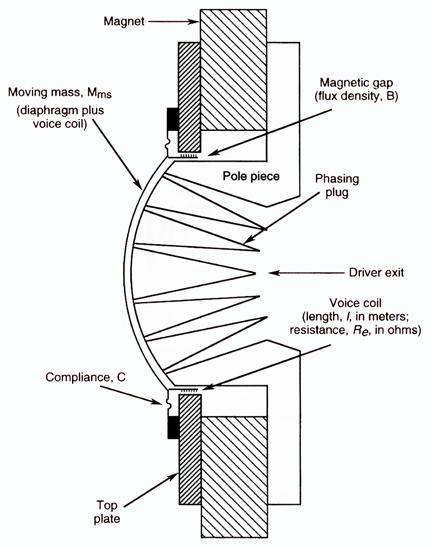
But there are more ways to low-compressed-Rome, if also counting other driver and enclosure, even taste, parameters: Its a about the mix being optimal towards the listener, more than what type of road/direction to choose.
3. The enclosure vs various compliance factors of the driver
Typically larger enclosures for the same size driver add less dynamic compression. But this highly depends on other parameters and if there is any tailoring/adjustment opportunity in the electronics (preferable analog room-adjustments for high end applications). A dipole driver might at first seem the solution, if it where not that to cope with the VASTLY higher amount of excursion needed for the same sound level output. Hence, all dipole's come with stiffer and usually less-linear types of suspension and when comparing it for dynamic compression linearity, its not easy to match output AND linearity to dynamic drivers with dedicated enclosure. In the end only a very very large amount of dipole membrane surface can compete with a driver placed in an enclosure (with its compression effects being typically far more linear than any type of mechanical driver-integrated suspension is). One or the other can be compensated by DSP, but speaking of high end, not one of such applications has convinced me up to now (and yes we also did a lot of R&D on this DSP path, as its easier to work with digital than analog, but still we feel to go for analog for top tier applications, if not already only for not adding a A/D D/A path that will always come short to the latest and best DAC/server, let alone turntable nqualities we cherish to consistantly upgrade to).
4. The waveguide/horn vs driver and/or waveguide vs overall baffle shape/covering.
Compression drivers can sound ok in balance, if coming with a next-level type of suspension, and when being placed in a modest horn/waveguide. But please don't assume that a horn, when going from small to big "decompresses" the sound from the compression driver. No, au contraire, anything that is not just plain free baffle compresses sound. So a compression driver does a lot of this, and you have to add the waveguide/horn on top. To explain it simply: if sound can still bounce up and down before it goes out, it compresses. So more detail, yes, but less balance.
Speaking of dynamic compression, we ideally we see some freedom of movement on the compliance part of the driver, no need for a compression driver unless wanting crazy SPL gain (PA, or with let's say 2 watt DHT SET). In the end, with most horns, we cannot expect sound to be the same as the original happining (acoustic concert) or intention of the mastering engineer (using probably not horn monitors). We can reach a desirable status quo with electronic pairing, but with dynamic compression added to the mix, playback volume soon becomes more important than it should or could be.
We do can expect the mastering engineer to use wave-guides and here also the baffle has a role: sharp edges will dynamically compress all sound compared to those fitting the dimensions of the baffle. Hence a baffle should be as small as possible, have rounded of/slanted edges, or be completely rounded over its front face (working well only with the appropriate room, since energy is now redirected to walls rather than to the listener, and speed of sound, now more also non-direct will appear lower or a touch more smeared). Or better still: have a damping material covering it to compensate the applied waveguide effect (We do so, but also see Wilson, Rockport etc.). All other effects in balance of speaker output vs room vs mastering studio conditions should be handles in the filter (a flat curve on-axis, or especially 15 or 30 degrees, will only sound good in a studio, not a top-tier listening room).



















